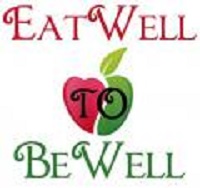Stocking A Heart-Friendly Kitchen

The kitchen table is where heart health begins. Stocking a heart-friendly kitchen is the key to heart health. It makes sense that the foods we fill our kitchen with from our pantry to the refrigerator and freezer sets the pattern for what we eat. When heart-healthy foods are on hand at all times, planning and preparing heart-healthy meals becomes a snap. It saves you time and stress over deciding what to have for busy days and weeknights when you may not have time to stop at the grocery store. Having heart-friendly foods available puts you in control with less worry and more time to enjoy a nutritious meal.
A heart-healthy or well-stocked kitchen means what you’ll find in your pantry, refrigerator and freezer are foods promoting heart health. Making simple yet healthy changes adds up over time to a healthier you.
The best way to learn and begin is to list foods to phase-in (heart-friendly foods) and foods to phase-out (heart-unfriendly foods):
Phase-in foods:
• Homemade dressings, marinades and sauces
• Plain, low-fat Greek yogurt. Add in real fruit, nuts, or seeds
• Whole-grains, barley, quinoa, oatmeal, whole-wheat pasta, bulgar, farro, and 100% whole wheat bread and crackers
• Skim, 1% or 2% milk, unsweetened tea, coffee, or water
• Legumes: black, white, navy, kidney, garbanzo beans, lentils, peas and edamame
• Fresh, frozen or canned fruits and vegetables
• Plant-based fats: avocados, nuts and nut-butters, and plant-oils (olive, flax, walnut)
• Fish, fresh or canned: herring tuna, salmon, sardines
• Lean sources of red meat
Phase-out foods:
• Store bought dressings, marinades and sauces
• Fruit-flavored or “fruit on the bottom” yogurts
• Refined grains, couscous, pasta, white or flavored rice and enriched breads and cereals
• Sugary drinks: soda, flavored waters, sweetened teas and juices
• Canned baked beans, chilis and soups
• Mashed potatoes and veggies with added cream and butter; fruit canned in heavy syrup
• Margarine, butter, mayonnaise, lard, and animal fats
• Preserved meats, fried fish, fried chicken and high-fat meat
If food budgeting is a concern, here are some budget shopping and better eating tips so you can still eat healthy without breaking the bank:
• Purchase frozen fruits and vegetables in the off season. Purchase locally grown produce in-season, when they are less expensive.
• Buy in bulk things like nuts, grains, dried fruit, and whole-wheat pasta.
• Menu planning saves time and money. Work leftovers into your menus.
• Store brands are often cheaper than using coupons. Coupons may save money but they are often for highly processed foods.
• Get your omega-3’s economically from canned salmon, tuna, sardines, and herring.
Story Credit: http://www.och-c.com/?q=article/stocking-heart-friendly-kitchen


